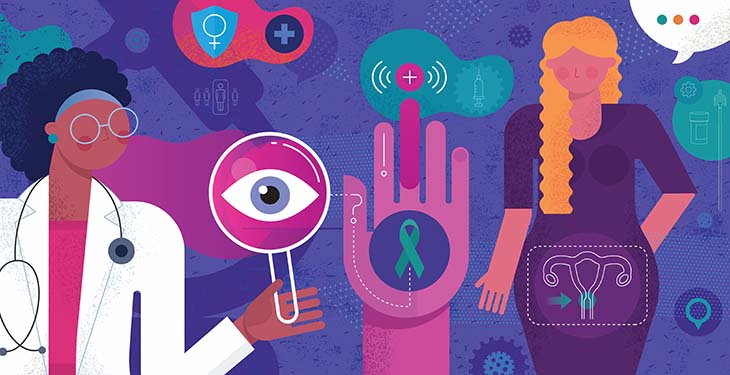World Cancer Day is observed every Feb. 4 to raise awareness about cancer, encourage its prevention and mobilize action to address the global cancer epidemic.
The good news is that when it comes to one cancer, cervical cancer, cases are dropping in many parts of the world where there is access to the human papillomavirus (HPV) vaccine. HPV is blamed for causing most cervical cancer cases.
The global Cervical Cancer Elimination Initiative is setting goals for HPV vaccinations and targets for screening and treatment.
In the United States, cervical cancer rates are decreasing 11% each year in women ages 20 to 24, according to the American Cancer Society. This likely indicates cancer prevention from the HPV vaccine.

UC Davis Comprehensive Cancer Center is committed to spreading awareness about the importance of cervical cancer screenings and promoting the HPV vaccine as the No. 1 way to prevent the devastating disease.
Julie Dang, executive director of the cancer center's Office of Community Outreach and Engagement (COE), explains in a new YouTube video the exciting progress being made in lowering cervical cancer rates and what to know to prevent the disease.
What is cervical cancer and how prevalent is the disease?
Cervical cancer starts in the cells that line the cervix at the lower part of the uterus. Women between the ages of 35 and 44 are at highest risk of cervical cancer. More than 13,000 new cervical cancer cases will be diagnosed this year, and more than 4,000 people are expected to die from the disease.
The cancer grows slowly due to a cell pattern that gradually becomes abnormal. That's why early detection is so important. This slow-growing cancer is highly treatable if caught early. But the key is making sure that screening guidelines are followed closely.
What causes cervical cancer?
Nearly 100% of all cervical cancers are caused by HPV, which is a common sexually transmitted disease. In fact, anyone who is sexually active is likely to get HPV at some point in their lifetime. Usually, HPV clears on its own, but persistent infections can cause abnormal cell growth in the cervix. Fortunately, because of the HPV vaccine, cervical cancer is one of the most preventable cancers.
The rate of cervical cancer in young women is declining dramatically, which is wonderful proof that the HPV vaccine is working. In some developed countries, rates are so low that the disease is on its way to being eliminated.

How do you know if you've had HPV?
There are HPV screening tests, including self-testing kits you can use at home. The HPV test is designed to detect an infection caused by high-risk types of HPV that are more likely to cause pre-cancers and cancers of the cervix. The HPV test can be done alone or at the same time as the Pap test (called a co-test).
What are the latest screening guidelines for cervical cancer?
Sexually active women between the ages of 21 and 29 should be screened using a Pap test every three years. At 30, they have three options:
- Continue with Pap test every three years
- Get an HPV test every five years, or
- Get both the Pap and the HPV test every five years
What about the guidelines for when to get the HPV vaccine? Is it a safe vaccine?
The HPV vaccine has been studied for decades and is very safe and effective. Both boys and girls should receive the vaccine because boys can pass HPV on to girls and HPV is now linked to six different types of cancers.
Federal guidelines recommend the routine vaccine be given between the ages of 9 to 12. Up to age 14, children should receive two doses of the vaccine. At 15 and older, they should get three doses. Adults under age 45 are encouraged to consult with their doctor about whether they should receive the vaccine.






